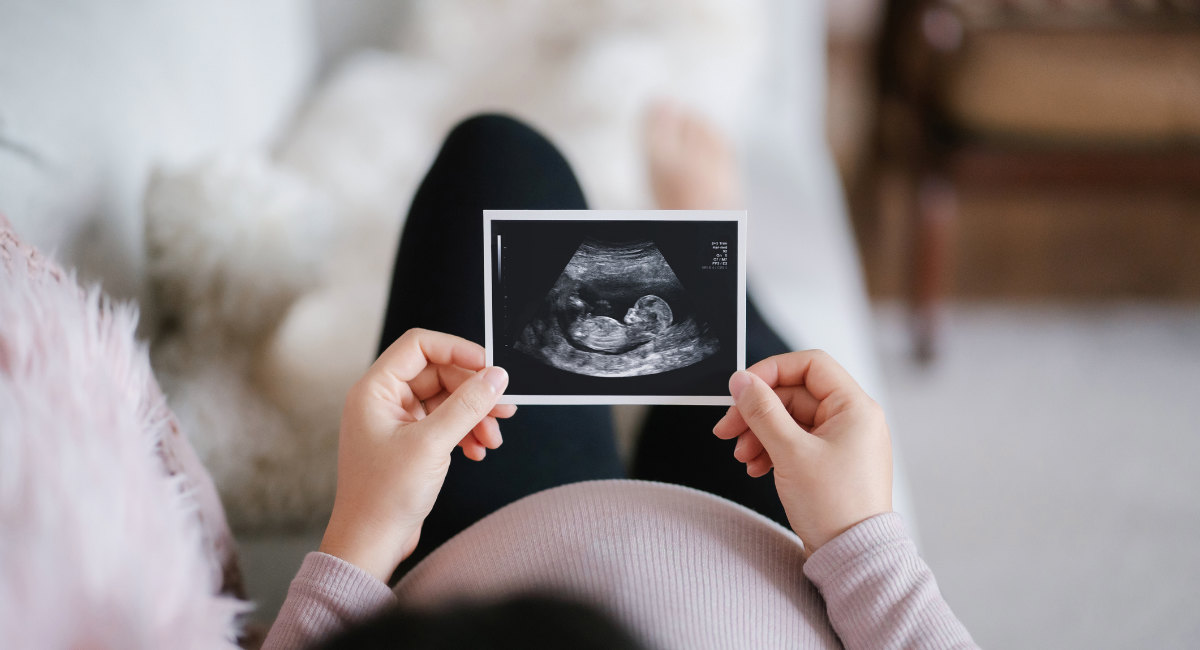A recent op-ed in Newsweek titled in part, “Abortion Care Saved My Family,” purports to show that ‘abortion’ is pro-life. While the author attempts to show that his wife needed an ‘abortion’, in reality, what she needed and received was standard miscarriage treatment. As Live Action News has repeatedly shown, the two are not the same, though the same procedure may be used in both instances. Miscarriage treatment attempts to remove an already naturally deceased child’s remains; induced abortion intentionally kills a preborn child and then removes the remains.
In the piece, author Jason Nichols, a “senior lecturer in the African American Studies Department at the University of Maryland College Park,” explains that his wife was several months pregnant when she started experiencing heavy bleeding and severe chills. After a trip to the emergency room, she received heartbreaking news. He wrote:
As the weekend progressed, so did the bleeding. It got heavier and darker. My wife began to sweat and to have severe chills. She is registered nurse, and we decided on Sunday morning to go to the emergency room. When we arrived, she was taken straight to Labor and Delivery, where the nurse performed a Doppler test and was unable to find Jojo’s heartbeat. The doctor and radiologist both performed ultrasounds and gave us the devastating news that our pregnancy was no longer viable at 14 weeks.
The medical term is a “missed abortion.” We were allowed to go home after being told about the next steps and a procedure that would have to be performed in the coming days.
When we got home, my wife’s illness continued. We took her temperature, which turned out to be 103.7. We returned to the hospital immediately for her procedure to remove Jojo and the infection.
Though Nichols claims the medical term is a “missed abortion,” this condition is also often referred to as a “missed miscarriage.” Was Nichols misled by the use of the term “abortion”? Is the medical community’s and the abortion industry’s (often grief-inducing) conflation of the terms “miscarriage” and “abortion” misinforming families and causing women who have had natural miscarriages (necessitating surgical intervention or medication) to think they have had induced abortions?
After all, misleading women and families about abortion vs. miscarriage is certainly one way the abortion industry can garner support for elective, intentional killing by abortion.
Though Nichols doesn’t explicitly say, it is implied that his wife needed an emergency dilation & curettage (D&C) procedure following her miscarriage to remove her deceased preborn child’s body, due to the warning signs of illness and high fever, which could indicate infection. This D&C would be considered standard (and very much legal) miscarriage care. However, because the D&C technique is also sometimes used as a first-trimester surgical abortion procedure (during which a still living child is intentionally killed), abortion proponents like Nichols often liken it to an abortion — but it’s not.
An induced abortion is always the direct and intentional taking of a preborn human life in the womb. An induced abortion has one goal — the death of a preborn child. Though not the case in Nichols’ wife’s missed miscarriage situation, instances in which a mother’s life is in danger may require in the preterm delivery of a child, secondarily resulting in that child’s unintended death. This is also not an abortion, because the primary intention was not to cause the death of the child, but to protect the health and wellbeing of the mother.
As Nichols states, his preborn child was already deceased; the D&C his wife underwent was not the direct and intentional death of his child, but simply the removal of the child’s already deceased body.
In his insistence that abortion should remain legal for health crises like the missed miscarriage his wife experienced, Nichols also cites the stories of two women that have received media attention in recent months: Anya Cook and Kate Cox. Both women have claimed that they needed ‘life-saving abortions’ — and both women were incorrect.
Cook, who experienced PPROM, had health complications when she was sent home from the hospital erroneously. Her treatment had nothing to do with abortion laws, and presumably was due to medical mismanagement on the part of the hospital. Had her life been threatened enough to require the preterm delivery of her child, such medical care would not have been considered an induced abortion and would not have been illegal. Her story is further explained here.
Cox’s story has been widely exploited after she claimed she needed a ‘life-saving’ induced abortion because her preborn child was diagnosed with Trisomy 18 — a genetic condition affecting her preborn child, but that was not life-threatening to Cox in any way. The brutal abortion procedure Cox crossed state lines to seek was not necessary to save her life, but to free herself from life with a child with a disability — a fact further confirmed when she happily announced a subsequent pregnancy, which put her in the same amount of physical risk.
Though there are vast differences between miscarriage care and induced abortion, those advocating for the killing of preborn children will continue to muddy the waters, using falsehoods to push the narrative that abortion is necessary for the health and wellbeing of women. Those who are pro-life are not against saving the life of the mother and they’re not against standard medical care after a miscarriage — they’re simply against the direct and intentional homicide of children in the womb.







